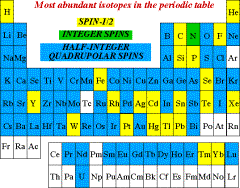NMR spectroscopy exploits the interaction between a strong magnetic field and the nuclear spin of nuclei such as 1H, 2H, 13C, 15N, 23Na, 27Al, 31P, etc. (more precisely all nuclei with a nuclear spin), to probe the local electronic and nuclear environment of these nuclei. By taking advantage of rf irradiation in advanced NMR pulse sequences the nuclear spin interactions may manipulated to provide very detailed information about structure and dynamics of small up to very large molecules and molecular systems in solution, suspension, or solid phase.
Depending on the area of application, the technique typically requires at least 100 nanomoles of molecules, which for liquid-state NMR spectroscopy typically will be prepared as a 1 mM solution in 0.5 ml deuterated solvent or in solid-state NMR spectroscopy will take the form of an amorphous, microcrystalline or crystalline sample accommodating an overall volume of less than about 200 ul. Biological NMR of large proteins typically requires 15N and/or 13C isotope labelling.
Aarhus University has facilities for all kinds of solid-state NMR, organic solution NMR spectroscopy (Organic Chemistry groups), and is currently establishing biological liquid-state NMR. Medical imaging can be found at Aarhus University Hospital.
Details on the range of applicability, sample preparation etc. can be obtained by contacting Prof. Thomas Vosegaard (tv@chem.au.dk)or Assistant Prof. Anders Malmendal at the Laboratory of Biomolecular NMR Spectroscopy nmr.au.dk @ Aarhus University NMR Center.